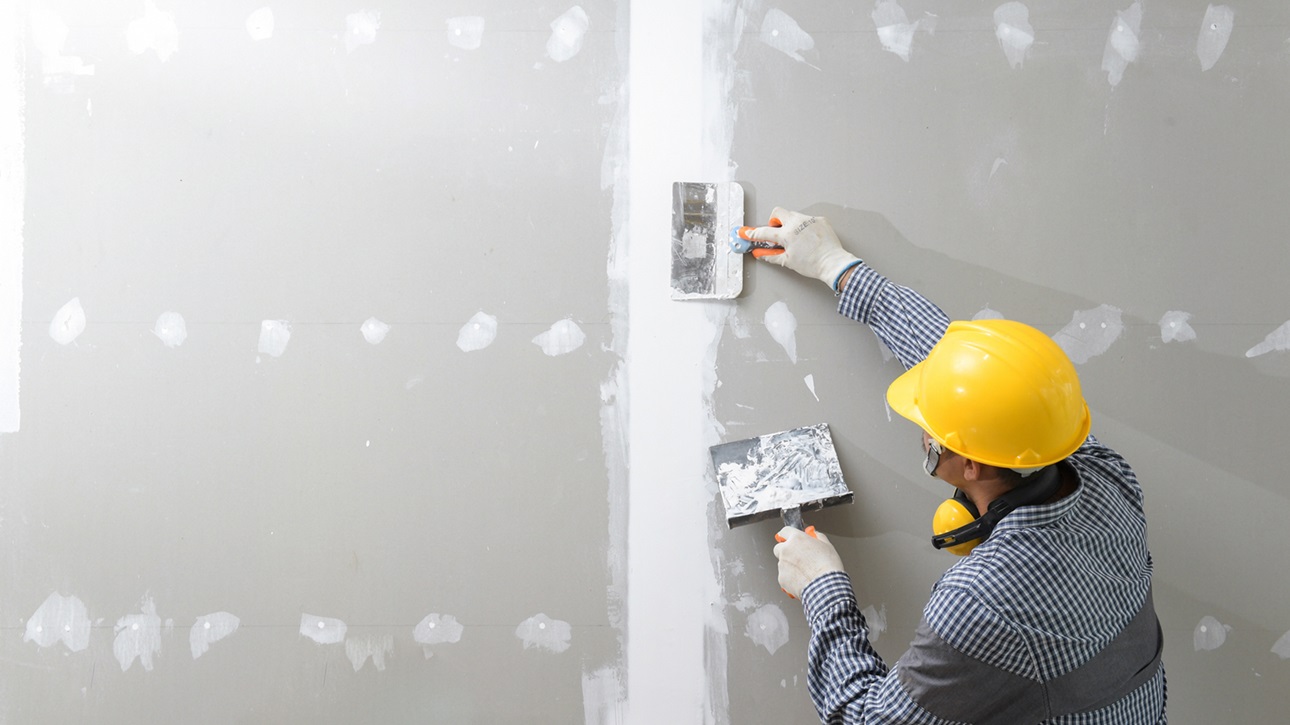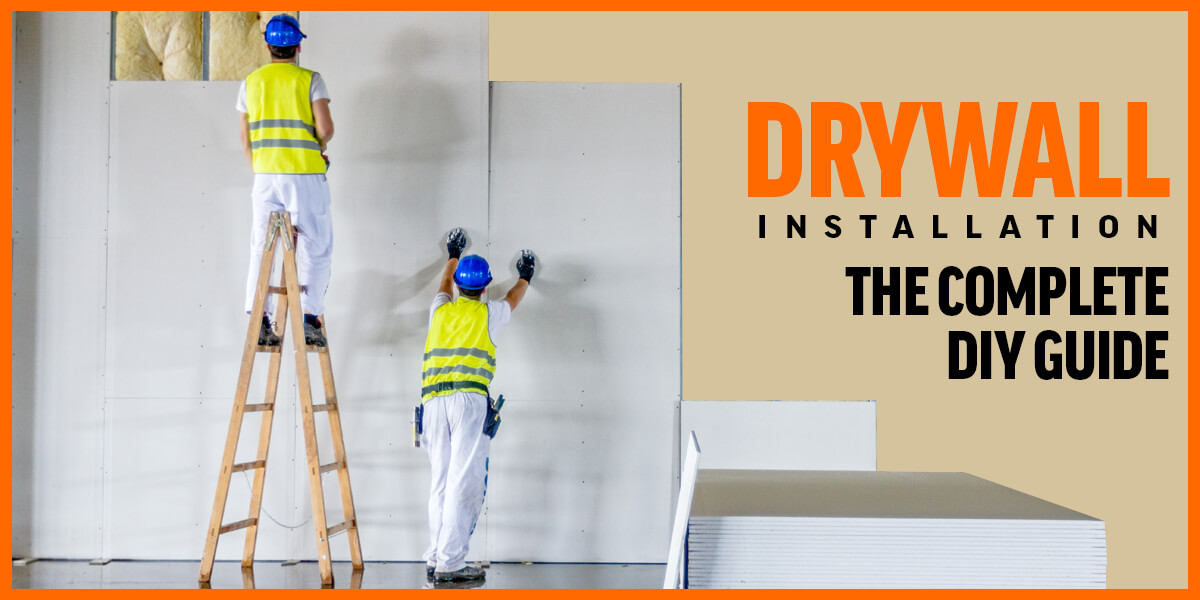Advanced Techniques for Effective Drywall Installation
Advanced Techniques for Effective Drywall Installation
Blog Article
The Ultimate Step-by-Step Guide to Drywall Installation: From Prep to Paint
Drywall installment is a crucial step in any type of construction or remodelling job, and it needs careful attention to information and exact execution. In this thorough overview, we will certainly walk you with each step of the procedure, from the initial prep work to the final paint. From collecting the required tools and materials to gauging and cutting the drywall panels, we will offer you with clear and concise guidelines to make certain a successful installment. However that's not all-- we will additionally cover the vital steps of safeguarding the panels, finishing the surface areas, and achieving a perfect paint work. Whether you're a skilled DIY lover or a novice home owner, this overview is your go-to resource for achieving specialist results.
Gather Necessary Tools and Products
To start the drywall installation process, it is essential to gather all the essential tools and materials in a professional fashion. Having the right devices and products not just guarantees a reliable and smooth installment but also adds to the general top quality and sturdiness of the completed project.
This will allow you to reduce the drywall sheets to the right dimension, reducing waste. An energy blade with sharp blades is important for accurate and tidy cuts.
Following, you will certainly need a cordless drill or screw weapon to protect the drywall sheets to the studs. Make certain to have a sufficient number of drywall screws handy. These screws must be long enough to penetrate the drywall and firmly secure it to the studs.
Other necessary devices consist of a drywall lift or a couple of assisting hands to aid with positioning and holding the drywall sheets in position. A drywall T-square can be valuable for noting reducing lines, while a rasp or fining sand block will allow you to smooth any harsh sides.
Finally, collect all the necessary safety and security tools, such as safety glasses, handwear covers, and a dust mask, to protect yourself during the installation process.
Prepare the Workspace
Prior to beginning the drywall setup procedure, it is critical to effectively prepare the workplace to make sure a smooth and efficient installment. This step is necessary as it sets the structure for the whole project, making it possible for the setup to continue effortlessly.
To begin, it is very important to get rid of the workplace of any kind of furniture, designs, or other items that may obstruct the setup procedure. This consists of getting rid of wall hangings, covering furniture, and protecting the floors with decline fabrics or plastic sheets. Additionally, ensure that the area is well-ventilated by opening windows or utilizing fans to avoid the build-up of dust and fumes.
Following, check the walls and ceilings for any existing damage or irregularities. Address any type of issues such as cracks, holes, or irregular surfaces before waging the setup. This may include patching up openings, fining sand down rough locations, or applying a skim layer to level the surface.
Finally, action and mark the design of the drywall sheets on the ceilings and walls. This will certainly offer as a guide throughout the installment procedure and aid guarantee precise placement of the panels (drywall Edmonton). Consider any type of outlets, switches, or other components that might need unique interest
Step and Cut the Drywall Panels
Specific cuts and exact measurements are crucial when working with drywall panels throughout the installation process. Prior to cutting the drywall, it is essential to measure the measurements of the location where the panels will be installed. Use a gauging tape to determine the elevation and size of each area, and make certain to make up any electrical outlets or fixtures that may call for custom-made cuts.
As soon as the dimensions are taken, transfer them onto the drywall panels noting or utilizing a pencil tool. Ascertain the measurements to make sure accuracy prior to waging the cutting process. It is suggested to make use of a T-square or straight edge to produce straight lines for cutting.

When cutting drywall to safeguard on your own from debris,Keep in mind to wear safety goggles and dust masks. In addition, it is recommended to have somebody help you in holding the panels during the reducing process to ensure security and accuracy
Install and Secure the Drywall Panels
Appropriate installment and safe add-on of the drywall panels is essential for a durable and effective surface. To start, meticulously lift the drywall panel right into place, guaranteeing it aligns with the marked get redirected here guidelines on the wall surface. Utilize a drywall lift or employ the assistance of an additional individual to hold the panel in setting while you safeguard it. Starting from one corner, insert drywall screws into the panel, driving them via the drywall and into the wall surface studs. Make sure to area the screws equally, approximately every 16 inches along the edges and every 12 inches in the center. It is essential to stay clear of over-tightening the screws, as this can create the drywall to break or fracture. Repeat this procedure for each and every panel, ensuring they fit tightly together with no voids. Once all the panels are set up, inspect the surface for any kind of sticking out flaws or screws. Pierce or utilize a screwdriver to sink any type of extending screws somewhat listed below the surface. Ultimately, apply drywall joint compound to cover the joints between the see this site panels and allow it dry completely before continuing to the next action.

Complete and Paint the Drywall Surfaces
To attain a refined and professional finish, the following action after installing and protecting the drywall panels is to meticulously end up and paint the drywall surfaces. Any type of visible joints or joints between the drywall panels should be covered with joint substance and tape. Prior to painting, it is crucial to prime the drywall surface areas to ensure correct attachment and a smooth coating.
Final Thought

From gathering the needed devices and materials to gauging and cutting the drywall panels, we will provide you with concise and clear guidelines to ensure an effective setup.Precise measurements and specific cuts are important when functioning with drywall panels during the installment process.Correct installation and safe and secure add-on of the drywall panels is essential for a successful and long lasting finish. Beginning from one corner, insert drywall screws right into the panel, driving them via the drywall and right into the wall surface studs.To attain a sleek and expert finish, the next step after installing and protecting the drywall panels is to carefully complete and paint the drywall surface areas.
Report this page